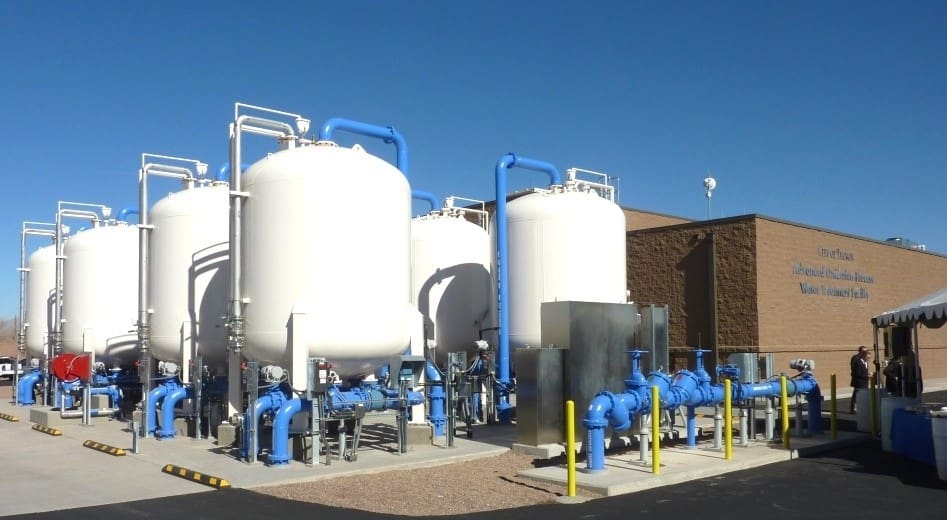Ingenious PFAS Treatment Solutions for Safer Water
The raising occurrence of PFAS contamination in water products necessitates an essential assessment of innovative therapy solutions. Advanced filtering modern technologies and novel chemical therapies present appealing methods for lowering these persistent toxins. Additionally, emerging bioremediation strategies offer a more lasting approach to dealing with PFAS obstacles. As governing structures proceed to adapt, recognizing the efficiency and scalability of these options ends up being critical. What ramifications do these innovations hold for public health and environmental reconstruction, and how can stakeholders efficiently execute them in varied contexts?
Introduction of PFAS Contamination
PFAS contamination has actually become a substantial ecological and public wellness problem. Per- and polyfluoroalkyl materials (PFAS) are a team of synthetic chemicals understood for their determination in the atmosphere and human body, leading them to be typically referred to as "forever chemicals." These compounds have been widely used in different markets, consisting of firefighting foams, water-repellent textiles, and food packaging, mainly as a result of their water- and grease-resistant residential properties.
The widespread use of PFAS has led to their detection in soil, water materials, and even in the blood of people and pets. Studies have connected PFAS exposure to numerous health and wellness issues, consisting of developmental impacts in infants, immune system disorder, and various forms of cancer. In addition, the ecological persistence of these substances complicates their destruction and removal, raising concerns concerning long-lasting ecological influences.
Regulatory bodies are significantly carrying out strict guidelines to keep an eye on and decrease PFAS degrees in drinking water and various other environmental tools. As awareness of PFAS contamination expands, it has become vital for communities and markets to seek efficient treatment options to mitigate direct exposure and guard public health and wellness.
Advanced Purification Technologies
As the necessity to resolve PFAS contamination escalates, progressed filtration technologies have emerged as a crucial component in the removal efforts targeted at getting rid of these consistent chemicals from water sources. These innovations utilize sophisticated systems to effectively target and catch PFAS substances, which are infamously resistant to traditional therapy techniques.
Among one of the most appealing strategies is making use of granular triggered carbon (GAC), which adsorbs PFAS particles as a result of its high surface area and porous structure. This method has been extensively implemented in both local and industrial settings, showing substantial decreases in PFAS focus. Additionally, ion exchange resins have acquired grip, especially made to uniquely bind PFAS ions from water, thus facilitating their removal.
Membrane filtering innovations, such as reverse osmosis and nanofiltration, likewise reveal efficiency in PFAS removal by physically separating pollutants from water - pfas management. These systems can accomplish high levels of purity, making them appropriate for drinking water applications
Chemical Treatment Advancements
Many chemical therapy advancements are being checked out to successfully attend to PFAS contamination in water materials. One promising technique involves making use of innovative oxidation procedures (AOPs), which utilize powerful oxidants such as ozone, hydrogen peroxide, or chlorine dioxide incorporated with UV light to break down PFAS compounds into less dangerous compounds. This technique has shown effectiveness in lab settings, revealing prospective for scalability in real-world applications.
One more innovative strategy is the growth of ion-exchange resins specifically designed to straight from the source target PFAS. These materials can precisely adsorb PFAS compounds from water, permitting for their removal during treatment procedures. Recent advancements have actually enhanced the efficiency and ability of these resins, making them a favorable alternative for water therapy facilities.
Additionally, scientists are examining using chemical representatives like persulfate and ferrous ions to enhance the destruction of PFAS in polluted water. These representatives can cause chain reaction that assist in the break down of persistent PFAS substances.
Emerging Bioremediation Methods
Recent innovations in chemical treatment advancements have led the way for checking out bioremediation strategies as a feasible choice for attending to PFAS contamination. Bioremediation harnesses the natural metabolic procedures of microorganisms to break down or change pollutants, making it an enticing strategy for dealing with relentless contaminants like PFAS.
Arising strategies in bioremediation include the usage of genetically crafted microorganisms that can particularly target and damage down PFAS substances. These microbial strains are being established for their boosted degradation capabilities, boosting the performance of the removal process. Furthermore, scientists are exploring the potential of plant-assisted bioremediation, where specific plant types might uptake and withdraw PFAS from infected soil and water.
Another promising technique is the application visit homepage of bioaugmentation, which entails presenting beneficial microbes right into polluted atmospheres to improve the destruction of PFAS. This approach can facilitate faster remediation timelines and improve overall effectiveness.

Regulative Structures and Requirements
A thorough governing framework is vital for successfully handling PFAS contamination and making sure public health and wellness security. The boosting recognition of per- and polyfluoroalkyl compounds (PFAS) as toxic wastes has prompted various government and state firms to establish requirements that regulate their presence in water supplies. The United State Epa (EPA) has actually established health advisories and is working towards establishing enforceable limitations for PFAS in drinking water.
State-level regulations differ dramatically, with some states embracing stricter guidelines than those recommended by the EPA. These laws frequently include maximum impurity degrees (MCLs) for particular PFAS compounds, monitoring needs, and reporting commitments for water utilities. Additionally, arising structures focus on check it out the remediation of infected sites, emphasizing the demand for efficient therapy modern technologies.

Verdict
In verdict, the advancement and implementation of ingenious PFAS treatment solutions are crucial for attending to the pervasive concern of water contamination. Advanced filtering technologies, chemical therapies, and emerging bioremediation techniques jointly present a diverse method to effectively lower and deteriorate PFAS degrees. As regulative frameworks proceed to evolve, incorporating these innovations will certainly be necessary to safeguard public wellness and bring back the integrity of polluted water resources, eventually adding to a cleaner and much safer setting.